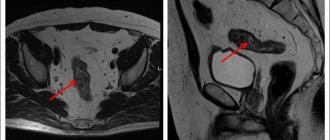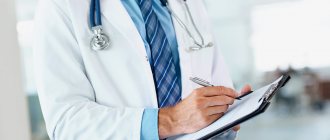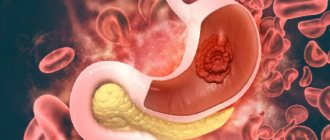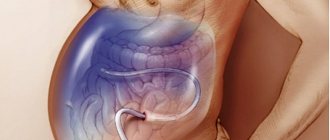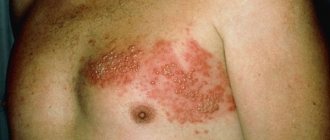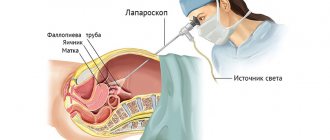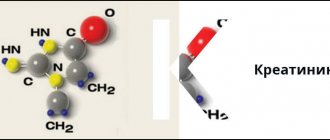Vladimir Smirnov/TASS
Statistics on coronavirus incidence and deaths in Russia are again breaking records every day. As of October 20, 34 thousand people became infected in the country over the past 24 hours. The total number of COVID-19 cases since the beginning of the pandemic has already exceeded 8 million. In many regions, authorities are again tightening sanitary restrictions, sending Russians into forced self-isolation and introducing a QR code system for visitors to public places. There are beds even in the main clinics of the country, including the Moscow Research Institute named after. Sklifosovsky, filled.
One of the population groups that has a particularly difficult time under these conditions is cancer patients.
“People with cancer are a vulnerable category of citizens. And you need to try to protect them from everything. Like a dandelion. They already had a lot of troubles in their bodies. Both the disease itself and the medications that we administer to them do not make them feel good,” states an oncologist, senior researcher at the Department of Tumor Biotherapy of the National Medical Research Center named after. N.N. Blokhina Igor Samoilenko.
As part of the stopcoronavirus.rf portal project “Let’s stop the pandemic together,” we conducted a long live broadcast with Igor Samoilenko and discussed with him all the most important things that cancer patients and their loved ones need to know during the pandemic. The event took place with the support of the Russian Ministry of Health.
What are the causes of cancer?
Speaking about cancerous tumors, it is necessary to clearly distinguish between the immediate cause of their appearance and risk factors.
The latter can become the impetus for the onset of the disease. According to the molecular genetic theory of malignant neoplasms, the occurrence and growth of a tumor is associated with damage to the genetic material of cells. It occurs under the influence of a variety of factors, which are collectively called carcinogenic agents. As a result, cells with DNA abnormalities acquire the ability to multiply uncontrollably, form a tumor and spread through metastases. Science assigns the main role among the causes of tumors to damage to the p53 gene. Normally, it limits the ability of cells to reproduce and prevents them from growing uncontrollably. In addition, some researchers report that the formation of a number of cancer pathologies with a hereditary predisposition may be associated with disturbances in the structure of the p15 and p16 genes. So, genetic mutations are the cause of cancer. But what causes our cells to mutate? All those influences that cause damage to the genetic material are classified as cancer risk factors. Scientists identify many such factors, but point out that in most cases a tumor occurs due to the combined influence of several of them. Traditionally, factors are usually divided into exogenous (arising from the external environment) and endogenous (arising inside the human body).
Important to remember
- Cancer patients often experience depression, anxiety, sleep disturbances, and irritability. In remission, they may experience post-traumatic stress disorder, substance abuse, and suicidal behavior.
- Most people react to a cancer diagnosis according to the Kübler-Ross model: they deny the disease, get angry, bargain, experience depression and eventually come to terms with their condition.
- Depression may reduce the likelihood of a positive outcome with treatment. At the same time, studies indicate that patients without depression have a higher chance of recovery
- Patients often become depressed and anxious due to misinformation about their illness and lack of psychological help. The task of a psychiatrist and medical psychologist is to balance the emotional background and correct the mental status with the help of medications, psychotherapy and psychological training.
Exogenous factors
They are divided into physical, chemical and biological.
Physical factors
- Solar
ultraviolet Ultraviolet radiation from the sun has long been recognized as one of the most significant factors for the appearance of tumors. UV rays, passing through DNA molecules, damage their genetic structure. This causes mutations in genes that are responsible for suppressing tumor cell growth. - Ionizing radiation
This risk factor is predominantly artificial, technogenic in origin. Radiation can lead to the development of many types of tumors, since it has a pronounced damaging effect on the gene structure of cells. Regular occupational exposure to radiation or a single strong exposure increases the risk of developing cancer by 2–3 times. - Electromagnetic fields
Medicine has long known that constant exposure to intense electromagnetic radiation negatively affects human health. This is usually associated with his professional activities. Thus, according to some studies, people working in the telecommunications sector suffer from cancer one and a half times more often. - Fluorescent lighting
The importance of fluorescent light sources in the development of malignant tumors has been questioned by many scientists. But a specially conducted study speaks in favor of this cause of cancer. It confirmed the high incidence of cancer pathologies in people who worked in rooms with sources of intense fluorescent light for a long time (20 years or longer). - Chronic tissue trauma
Trauma (especially constant) carries with it the likelihood of the appearance of cancer cells. A good example of this is melanoma—this form of skin cancer is more likely to occur in areas that are exposed to friction, such as from uncomfortable clothing.
Chemical factors
The impact of this group of factors is more often observed in people who, due to their occupation, are in constant contact with aggressive chemicals. Such “dangerous” professions include:
- petrochemical production;
- production of nitric acid;
- production of rubber products;
- pharmaceuticals;
- work in a coal mine;
- production of polyvinyl chloride and other plastics;
- production of benzene and pesticides.
In addition, according to the type of exposure, poor environmental conditions can also be attributed to the chemical causes of oncology.
Pollution from automobile exhausts, emissions from large industrial production, water, air and soil pollution with carcinogenic substances are the most important risk factors for cancer development. Biological factors
- Features of the diet It
has been experimentally confirmed that sufficient consumption of fresh fruits and vegetables containing many vitamins (in particular, A, E and C) reduces the risk of developing cancer. Conversely, there is evidence that a large amount of animal fats and proteins in the diet increases the incidence of tumors. - Bad habits
Drinking alcoholic beverages can be considered a special case of poor diet. It is known that ethanol can provoke the formation of at least 10 types of malignant neoplasms. First of all, these are cancerous tumors of the digestive system: esophagus, stomach, small and large intestines. Smoking cigarettes cannot be called a diet disorder, but this habit is traditionally mentioned together with drinking alcohol. The oncological danger of tar, soot and other products of tobacco combustion is a long-confirmed fact and is beyond doubt among doctors around the world. Lung cancer is one of the most common oncological diseases, and it is also among the leaders in the number of deaths. And more than 90% of cases of this pathology are associated with smoking. - Viral infections
An increased risk of developing malignant tumors is directly related to infection with certain types of viruses. Among them, special mention should be made of the rubella virus and human papillomavirus of various types. - Pharmacological drugs
Among drugs, the most likely to cause cancer are hormonal drugs containing estrogen. This group includes many popular contraceptives (oral contraceptives) and medications that are prescribed for menstrual irregularities and to alleviate menopausal disorders. It is important to note that these drugs become a risk factor only if they are used uncontrolled and if medical recommendations are not followed.
Why do people get cancer: a history of illness and recovery
Each of us has our own destiny and our own, seemingly unrealistic, dreams. Sometimes we spend our entire lives suppressing our desire for happiness. By changing our lives, we get better. The case of Le Shan's patient, whose name was Robert, is an excellent illustration of this.
He was a good specialist, did not complain about his health, but at the age of 65 he decided to retire. Robert was sure that he would devote his free time to his grandchildren. But his son separated from his wife, and his grandchildren were taken to another city. Life for Robert has lost its meaning. His health deteriorated sharply, and soon he received a disappointing diagnosis - cancer. It is unknown how Robert's life would have turned out, but he met with Dr. Le Shan.
From the very first conversations, Robert realized that his cancer had a psychological cause - he had lost the main incentive in life. Psychotherapy sessions revealed another almost forgotten interest in politics. Le Shan advised Robert to join an organization dealing with social issues. Communication with new people, new responsibilities returned to him his former activity, and with it fresh strength. To keep fit, Robert had to go in for sports. The tumor stopped growing and then disappeared.
Biological characteristics of the body
- Age
All our cells go through many division cycles during their lives. And with each such cycle, breakdowns and errors accumulate in their genetic material. Many of them correct the internal protective mechanisms of the cell, but, nevertheless, their total volume steadily increases with age, which is the cause of cancer. This is why the risk increases as a person ages. - Race and Ethnicity
Caucasians are, on average, 4 times more likely to develop skin cancer than black people. For other types of cancer, the opposite trend is observed: for example, lung cancer and prostate cancer are more common in the Negroid race. But Asians have a generally lower risk of developing any tumors than other members of humanity. - Family predisposition
The increased incidence of cancer in members of the same family is a long-established medical fact. This is due to the fact that genetic disorders leading to the development of cancer can be inherited with a chance of about 5–10%. Most often, these pathologies are inherited in the closest degree of relationship, for example, from parent to child. In addition, a situation where there are 2 or more cases of cancer in the family history leads to a significant increase in the risk of inheritance. - Anthropometric indicators
These include characteristics of the human body such as height, weight and body mass index. A special study showed that the risk of tumors in people with excess body weight is higher. - Pathologies of the immune system
Science has long known that any immunological pathologies increase the likelihood of malignant neoplasms. For example, people with HIV infection and those taking immunosuppressive drugs, say, after organ transplantation, have been shown to have a higher risk of developing Kaposi's sarcoma. This is due, first of all, to the fact that with a general suppression of immune functions, its antitumor activity also suffers. After all, normally the immune system should recognize and destroy even single malignantly degenerated cells. - Endocrine factors
The influence of hormones on the risk of certain tumors has long been proven in a number of specialized studies. The main role in this case is given to sex hormones. Thus, malignant neoplasms of the female reproductive system, as well as the mammary glands, can be estrogen-dependent. Androgen-dependent tumors in men are, first of all, prostate cancer. - Pregnancy
Pregnancy is always associated with global endocrine changes in the woman’s body. These changes have a high risk of activating oncogenesis processes. Therefore, when planning and diagnosing pregnancy, it is useful for all women to visit a consultation with an oncologist.
What is precancer
In addition to the first symptoms of cancer, there are so-called background and precancerous diseases. Background diseases are pathological processes as a result of which tissues or organs may be predisposed to the appearance of a tumor. Precancerous diseases are a series of changes that can eventually develop into cancer. For each organ, a list of such conditions has been developed. Here are some of them:
- Oral mucosa : leukoplakia, ulcers, cracks, erosions, papillomas.
- Larynx and nasopharynx : papillomas, pachydermia, leukokeratosis, leukoplakia, various growths of fibrous, connective, glandular tissue (fibroma, adenoma, chondroma).
- Thyroid gland : diffuse goiter, nodular goiter.
- Skin : long-term non-healing fistulas, scars, ulcers, age spots and warts (especially injured ones), pigmentary xerodelia, chronic cracks and macerations, skin development abnormalities, senile keratosis.
- Mammary glands : diffuse or focal mastopathy.
- Stomach : gastritis, especially chronic atrophic, chronic ulcerative process.
- Colon and rectum : chronic ulcerative colitis, long-term non-healing fissures, fistulas, single polyps, scars.
- Bladder, prostate gland : papillomas, chronic inflammatory process, glandular growths (adenomas).
- Female reproductive system : leuko- and erythroplakia, polyps, hyperplasia, adenomatosis, condillomas, benign tumors, cicatricial deformities of the vaginal walls, erosions, true and false, ectropion of the cervix, recurrent polyposis of the uterine cavity, fibroids and fibroids.
Diagnosis of cancer in Onko
Preventive examinations play the most important role, the full range of which you can undergo at the Oncological Department.
They solve the main problem of oncology - late detection of tumors. At the initial stages of cancer development, the success rate of treatment is more than 80%, regardless of the type. Cancer screening may include:
- clinical and biochemical blood tests;
- clinical urine analysis;
- determination of tumor marker concentrations;
- X-ray examinations;
- Ultrasound of internal organs, peripheral lymph nodes, skin nodules, mammary glands, thyroid gland; magnetic resonance imaging, computed tomography and positron emission tomography, combined with computed tomography according to indications.
You need to be vaccinated before starting intensive care
The doctor considers the idea of vaccinating people with cancer, who already have a weakened immune system, against Covid to be very correct. If such a person gets sick with coronavirus, he does not receive the medications he needs and treatment of the cancer actually stops. The need to isolate such a patient and the inability to continue therapy until the infection, be it COVID-19 or influenza, is cured also play a role.
“In fact, if this concerns not Covid, but other vaccines, the general recommendation is that patients should be vaccinated against influenza, against pneumococcus, and so on. This is a common story, because infections can be more severe,” says Igor Samoilenko.
Patients can get vaccinated at any time before they enter the hospital. “We don’t vaccinate in the hospital. There we are busy with other things. If a person comes and gets vaccinated a week before surgery, there is no problem. He will not be protected yet, but he will be protected in a month, in a month and a half, when he receives his second dose and a sufficient number of antibodies have been developed,” explains the doctor.
Of course, with such a short period of time, at first, while immunity has not yet been formed, such a patient will still remain defenseless against infection. However, unlike those who decide not to get vaccinated, this will only be temporary.
It is also worth considering that, according to British studies, it is more difficult for patients with cancer to form antibodies to the vaccine.
Dmitry Rogulin/TASS
“They definitely need a second dose. And even after the second dose, they do not reach the same target levels as healthy people. At least not all of them. Therefore, efficiency may be reduced,” says Igor Samoilenko.
Because of this, the list of vaccines that they can use is slightly narrowed for patients with cancer. There is a high probability that a single-component vaccine will not be enough for them. However, this is the only limitation.
“In fact, there are no particular preferences for vaccines. If you ask me, I focus on the ones that are best published. It's important to me to have published evidence of effectiveness. Therefore, I would recommend doing any that is available today. If this were my patient, I would probably still choose the vector vaccine,” noted Igor Samoilenko.
At-risk groups
The likelihood of developing lung cancer depends on a combination of many different factors. The following categories of people are at risk:
- having cases of cancer among their immediate relatives (this is especially true for prostate cancer in men and breast cancer in women);
- working in hazardous industries associated with radiation/dust/inhalation of chemicals;
- having excess weight or a predisposition to it;
- having mental disorders;
- living in megacities near large industrial enterprises;
- eating improperly;
- regularly consuming alcoholic beverages and tobacco;
- mature and elderly people (over 50-60 years old);
- those who have experienced severe and prolonged stress.

